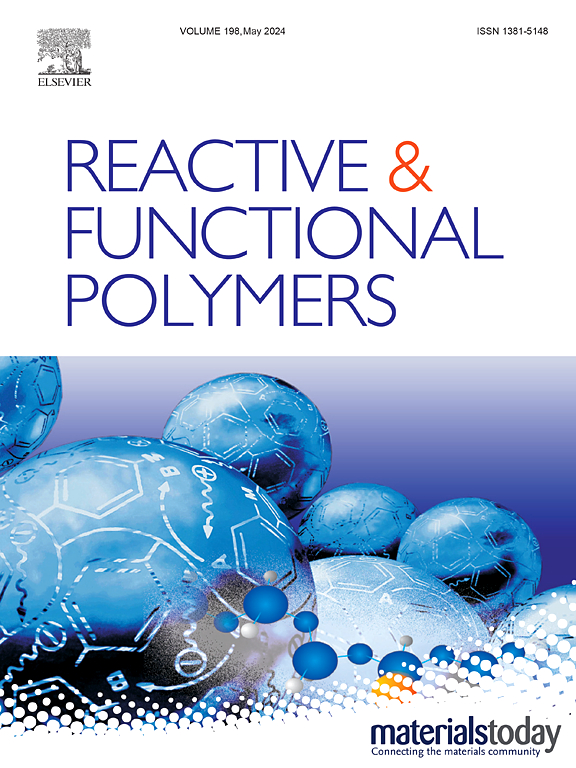Pore structure characterization of hypercrosslinked styrene-divinylbenzene adsorbents of the Macronet series and ion exchangers based on them from N2, Ar and CO2 adsorption
IF 5.1
3区 工程技术
Q1 CHEMISTRY, APPLIED
引用次数: 0
Abstract
The structure and adsorption properties of industrial adsorbents of the Macronet series from the class of hypercrosslinked polystyrenes (MN-200DR, MN-270) and ionites based on them (MN-500, MN-100, MN-270s) were studied. The parameters of the porous structure of the adsorbents are calculated based on experimental data on the adsorption of nitrogen, argon, and carbon dioxide. It has been established that these adsorbents have a hierarchical nanoporous structure. Nanopore fractions identified: 0.5, 0.8, 2.1 ± 0.2, 4.2 ± 0.2, 50–500 nm. The most developed system of micropores <1 nm with a specific surface area of up to 680 m2 g−1 are found in MN-270 and MN-100. Sulfocationites are distinguished by a lower content of micropores <1 nm (200–400 m2 g−1). Structural studies of Macronet adsorbents were carried out using the methods of electron scanning microscopy, infrared spectroscopy and X-ray phase analysis. Studies of the adsorption of phenol and metal ions from aqueous solutions on adsorbents Macronet were conducted. The most effective adsorbents for absorbing metal ions are those containing ultramicropores of 0.5 nm in size. Hypercrosslinked adsorbents are promising for use in sorption technologies for the complex purification of water from metal ions and toxic organic compounds.

macroet系列高交联苯乙烯-二乙烯苯吸附剂及其离子交换剂对N2、Ar和CO2吸附的孔结构表征
研究了高交联聚苯乙烯(MN-200DR、MN-270)及其基离子离子(MN-500、MN-100、MN-270)的工业吸附剂Macronet系列的结构和吸附性能。根据吸附氮气、氩气和二氧化碳的实验数据,计算了吸附剂的孔隙结构参数。研究表明,这些吸附剂具有层次化的纳米孔结构。所鉴定的纳米孔段:0.5、0.8、2.1±0.2、4.2±0.2,50-500 nm。在MN-270和MN-100中发现了最发达的微孔体系<;1 nm,比表面积高达680 m2 g−1。硫酸化矿的特征是微孔含量较低,约为1 nm (200-400 m2 g−1)。采用电子扫描显微镜、红外光谱和x射线相分析等方法对macroet吸附剂的结构进行了研究。研究了吸附剂对水溶液中苯酚和金属离子的吸附作用。吸附金属离子最有效的吸附剂是含有0.5 nm大小的超微孔的吸附剂。超交联吸附剂在金属离子和有毒有机化合物水中复杂净化的吸附技术中具有广阔的应用前景。
本文章由计算机程序翻译,如有差异,请以英文原文为准。
求助全文
约1分钟内获得全文
求助全文
来源期刊

Reactive & Functional Polymers
工程技术-高分子科学
CiteScore
8.90
自引率
5.90%
发文量
259
审稿时长
27 days
期刊介绍:
Reactive & Functional Polymers provides a forum to disseminate original ideas, concepts and developments in the science and technology of polymers with functional groups, which impart specific chemical reactivity or physical, chemical, structural, biological, and pharmacological functionality. The scope covers organic polymers, acting for instance as reagents, catalysts, templates, ion-exchangers, selective sorbents, chelating or antimicrobial agents, drug carriers, sensors, membranes, and hydrogels. This also includes reactive cross-linkable prepolymers and high-performance thermosetting polymers, natural or degradable polymers, conducting polymers, and porous polymers.
Original research articles must contain thorough molecular and material characterization data on synthesis of the above polymers in combination with their applications. Applications include but are not limited to catalysis, water or effluent treatment, separations and recovery, electronics and information storage, energy conversion, encapsulation, or adhesion.
 求助内容:
求助内容: 应助结果提醒方式:
应助结果提醒方式:


